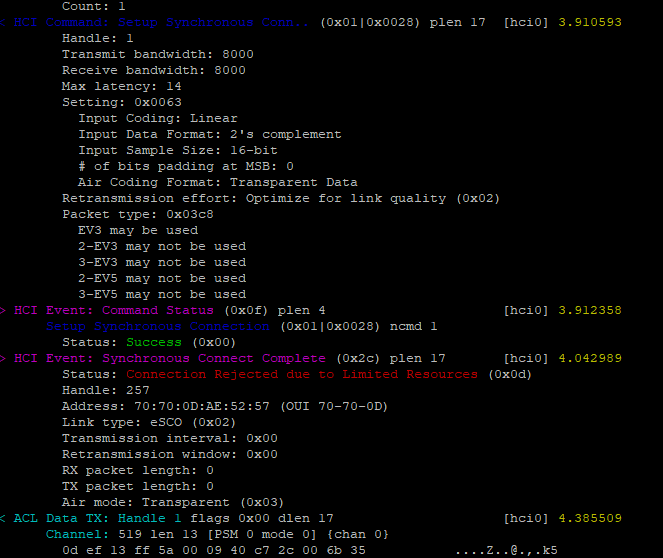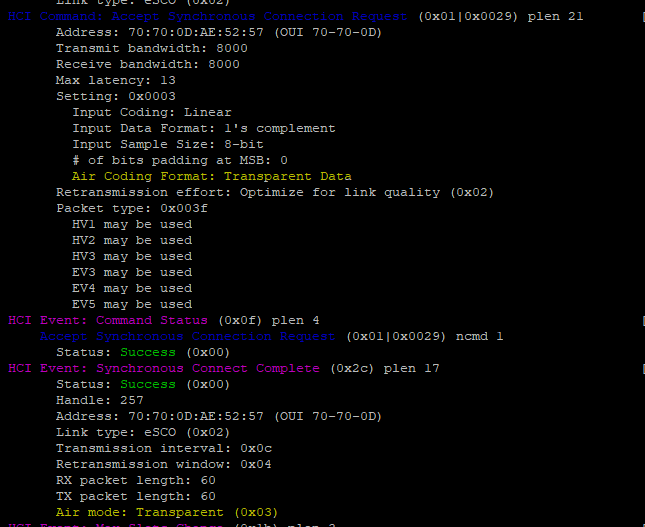Other Parts Discussed in Thread: CC2564
I am unable to get HandsFree voice over PCM with assisted WBS mode of CC2564C. I have managed to get the system working with 8KhZ (NB voice) PCM sampling. As soon as I switch to WBS using HCI_VS_Write_CODEC_Config, I get a sped-up (chipmunk) voice. I have disabled Ant, Ant patch, BLE and applied the AVPR patch as suggested on the forum. Init sequence is detailed below. Am I missing anything? Can you please provide some pointers that can help me debug this issue?
http://processors.wiki.ti.com/index.php/CC256x_Advanced_Voice_and_Audio_Features#WB_Speech
https://e2e.ti.com/support/wireless-connectivity/bluetooth/f/538/t/749492
AVPR Patch used (initscripts-TIInit_6.12.26_avpr_add-on.bts): git://git.ti.com/ti-bt/service-packs.git
Linux kernel version: 4.4.84
Bluetooth Stack: Bluez5_5.43
BT Init sequence:
1. HCI Attach: Load the bts file (TIInit_6.12.26.bts)
2. Load AVPR patch: initscripts-TIInit_6.12.26_avpr_add-on.bts
3. Disable Ant: hcitool cmd 0x3f 0x1D0 0x00 0x00 0x00





